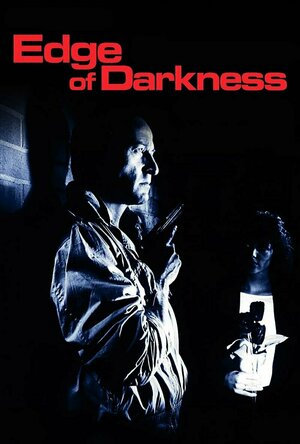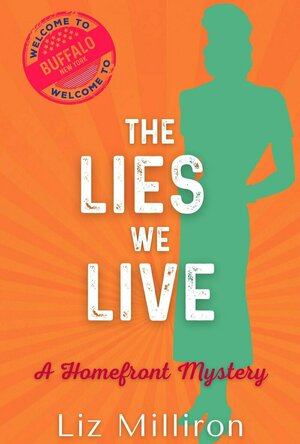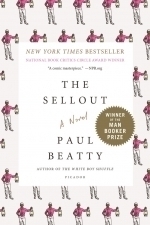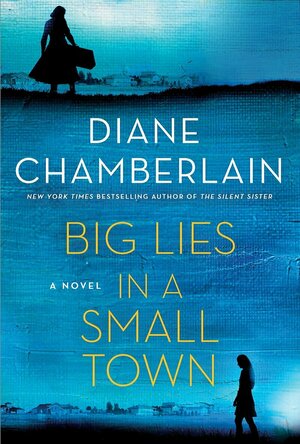Search
Search results
Funkydr79 (4 KP) rated Tears We Cannot Stop: A Sermon to White America in Books
Sep 6, 2017
Must read for all Americans
Tunde Adebimpe recommended Do the Right Thing (1989) in Movies (curated)
Purrsistently (46 KP) rated Sing, Unburied, Sing in Books
Jun 21, 2018
While it is excellent work, this is not really an entertainment read. Ward lays out so much in story far more powerfully than any essay on American race relations, trauma, privilege, and rural southern life ever could. It was chilling, moving, eyeopening for me. I definitely want to read Ward's other books.
The audiobook is very well done as well, read by a talented cast.
The audiobook is very well done as well, read by a talented cast.
Kristy H (1252 KP) rated A Girl in Parts in Books
Feb 13, 2018
A very lovely coming of age story, centering on Dottie, a child of divorced parents. The story is told in a series of nearly 100 vignettes, each of which is filled with wit and vulnerability. During the course of the novel, Dottie struggles with moving, poverty, an alcoholic stepfather, questioning her sexuality, race relations, playing sports, and her relationship with her mother, half-brother, and stepsister. Her character exhibits amazing grace and presence of mind as she continually questions the world around her.
Awix (3310 KP) rated Edge of Darkness in TV
May 5, 2020
Age shall not dim its brilliance, nor dodgy big-screen remakes with Mel Gibson: Edge of Darkness remains a landmark piece of TV drama, of enormous scope and ambition. The pitch - grieving detective hunts his daughter's murderer - sounds straightforward enough, even if the plot rapidly becomes ferociously convoluted. The key thing is that the conspiracy-detective storyline is in many ways the least important thing about the series.
Lengthy theses could and probably have been written about all the things that Edge of Darkness touches upon in the course of its six episodes: Anglo-American relations, the military-industrial complex, nuclear power, secret societies, ecology, the future of the human race, and much more (the original script ended with the main character mystically transforming into a tree). Strong performances and great direction keep it engrossing even when it's not entirely clear what's going on (you can generally get a sense of the direction of travel, though, and episode five works as a terrific mini-action movie even in isolation). Martin Campbell went on to successfully relaunch the Bond franchise twice, but this remains his magnum opus.
Lengthy theses could and probably have been written about all the things that Edge of Darkness touches upon in the course of its six episodes: Anglo-American relations, the military-industrial complex, nuclear power, secret societies, ecology, the future of the human race, and much more (the original script ended with the main character mystically transforming into a tree). Strong performances and great direction keep it engrossing even when it's not entirely clear what's going on (you can generally get a sense of the direction of travel, though, and episode five works as a terrific mini-action movie even in isolation). Martin Campbell went on to successfully relaunch the Bond franchise twice, but this remains his magnum opus.
Mark @ Carstairs Considers (2456 KP) rated The Lies We Live in Books
Apr 9, 2025
Betty Must Uncover the Truth for Her New Client
Business is booming for PI Betty Ahern, and September 1943 finds her opening her own office. She’s also taken on a new case. Her client is worried that her younger brother, a teenager, is up to something shady if not illegal. And when a dead body turns up, Betty realizes the stakes have been raised. Meanwhile, the stakes are also raised in her personal life when her fiancé, Tom, returns from the front in Africa. He’s been injured, and his return to civilian life is anything but easy. Can Betty solve the case and figure out how to navigate Tom being back?
As a fan of the series, I’ve been waiting to meet Tom, and I was happy to see that happen here. His return really forced Betty to mature, and I enjoyed seeing that character growth. Meanwhile, the mystery was also compelling. Between the two, I was engrossed in the book. The story does touch on race relations of the era, but without taking over the book. I also enjoyed that aspect of things. As usual, Betty narrates with some slang from the time, but I enjoyed it. There’s a smattering of foul language, but as long as you know that going in, you’ll be fine. To best appreciate this book, you’ll want to back up to the start of the series. Fans will be very satisfied with what we get here.
As a fan of the series, I’ve been waiting to meet Tom, and I was happy to see that happen here. His return really forced Betty to mature, and I enjoyed seeing that character growth. Meanwhile, the mystery was also compelling. Between the two, I was engrossed in the book. The story does touch on race relations of the era, but without taking over the book. I also enjoyed that aspect of things. As usual, Betty narrates with some slang from the time, but I enjoyed it. There’s a smattering of foul language, but as long as you know that going in, you’ll be fine. To best appreciate this book, you’ll want to back up to the start of the series. Fans will be very satisfied with what we get here.
Terry Crews recommended Do the Right Thing (1989) in Movies (curated)
Hamilton Leithauser recommended The Sellout in Books (curated)
Kristy H (1252 KP) rated Big Lies in a Small Town in Books
Mar 19, 2020
Morgan Christopher is shocked when she's plucked from prison and told she will be released early, as long as she perform a certain task: restore an old mural from the 1940s. Morgan, an art school dropout, has no restoration skills, but she is desperate to leave prison, where she is imprisoned for a crime she didn't commit. Once released, she finds herself captivated by the mural and what she finds underneath the layers of grime. Meanwhile, in 1940, young Anna Dale, an artist from New Jersey wins a contest to paint a mural for the post office in Edenton, North Carolina. She travels there to learn more about the town that she needs to capture. But once there, Anna is confronted both by kindness and deep-set prejudice.
I've never read a book by Diane Chamberlain before, and I really enjoyed this one. It's oddly captivating for centering on a painting from the 1940s. The point-of-view switches between Morgan and Anna and each are compelling narrators in their own right. This was one of those books where I found myself desperately wishing I could read faster, as I wanted to find out what happened to Anna (we're told early on she "went crazy").
I applaud Chamberlain for her original plot. It's odd, but not in a bad way, as it had me interested the entire time. She does a wonderful job of creating two completely different worlds: Anna's in the 40s and Morgan's in near present-day. She deftly weaves in art aspects; Morgan's drunk driving conviction and her past in prison; Anna's possible mental illness; and Morgan's benefactor, so to speak, Lisa, who springs her out of prison to fulfill the wishes of her late father, Jesse, a famous artist.
While this novel is mainly fiction, there are some great twists and turns, especially as we learn what happened to Anna. Chamberlain delves into race relations, as Anna confronts the prejudices of the south in the 1940s. Her writing style is easy, making you want to keep reading, and overall, I quite enjoyed this one. 4 stars.
I've never read a book by Diane Chamberlain before, and I really enjoyed this one. It's oddly captivating for centering on a painting from the 1940s. The point-of-view switches between Morgan and Anna and each are compelling narrators in their own right. This was one of those books where I found myself desperately wishing I could read faster, as I wanted to find out what happened to Anna (we're told early on she "went crazy").
I applaud Chamberlain for her original plot. It's odd, but not in a bad way, as it had me interested the entire time. She does a wonderful job of creating two completely different worlds: Anna's in the 40s and Morgan's in near present-day. She deftly weaves in art aspects; Morgan's drunk driving conviction and her past in prison; Anna's possible mental illness; and Morgan's benefactor, so to speak, Lisa, who springs her out of prison to fulfill the wishes of her late father, Jesse, a famous artist.
While this novel is mainly fiction, there are some great twists and turns, especially as we learn what happened to Anna. Chamberlain delves into race relations, as Anna confronts the prejudices of the south in the 1940s. Her writing style is easy, making you want to keep reading, and overall, I quite enjoyed this one. 4 stars.
A film with dodgy voices.
Catching up here with a review of a film I saw a couple of weeks ago.
What a great film “Get Out” was. Jordan Peele’s classic which unpeeled (sic) race relations in a wholly novel and horrifying way. Yes, the story was a bit ‘out there’ and unbelievable, but he pulled it off with great chutzpah.
With his follow-up film – “Us”…. sorry but, for me, it just didn’t work.
From great beginnings
It all starts so promisingly. Young Adelaide Wilson (a fine debut performance by Madison Curry) is on a seaside holiday with her mother and careless father when she wanders onto the deserted Santa Cruz beach at night. There sits, like some gothic horror ghost train, the Hall of Mirrors. “Find Yourself” it taunts. She makes the mistake of entering and changes her life forever.
Spin forwards 30 years and Adelaide, now a married mother of two, is back in Santa Cruz with a terrifying feeling that things are about to go pear-shaped. And of course they do!
Why oh why oh why those voices?
This film had me gripped until a particular point. Having people stand still and silent at the end of your drive is an incredibly spooky thing to show. But then, for me, the wheels came off big time. The “reveal” of who these people were I could take. But the manner of their behaviour and – particularly – how they talked was horrifying; and not in a good way. When “Red” started speaking I couldn’t believe my ears: Joe Pasquale after swallowing Donald Duck.
From there, the film became farcical for me, descending in progressive stages to a tunnel-based apocalypse: a plot element that was just so paper thin it bore no scrutiny at all.
This was, no doubt, an attempt at a satirical dig at the class structure of America (“We are Americans” adding a double meaning to the name of the film). If it had been played as a deliberate comedy farce it might have worked. But otherwise no.
Flashes of Peele brilliance
This is not to say that there are not positives in the film. The excellent Lupita Nyong’o gives the whacky material her all, and the other adult female lead – Elisabeth Moss (from TV’s “The Handmaid’s Tale”) – is good value as Kitty Tyler: a diabolical incarnation in either form!
Peele also delivers flashes of directorial brilliance. The “hands across America”, disappearing into the sea, is a sight that stays with you. I also liked the twist at the end, although in retrospect it’s difficult to relate it to the rest of the story and strikes of desperation in the storytelling.
Overall, a big disappointment
I know there are some who really like this movie. Each to their own, but I was not one of them. After “Get Out” I was hoping for something much better. I hope that was just Jordan Peele’s “difficult second album”.
What a great film “Get Out” was. Jordan Peele’s classic which unpeeled (sic) race relations in a wholly novel and horrifying way. Yes, the story was a bit ‘out there’ and unbelievable, but he pulled it off with great chutzpah.
With his follow-up film – “Us”…. sorry but, for me, it just didn’t work.
From great beginnings
It all starts so promisingly. Young Adelaide Wilson (a fine debut performance by Madison Curry) is on a seaside holiday with her mother and careless father when she wanders onto the deserted Santa Cruz beach at night. There sits, like some gothic horror ghost train, the Hall of Mirrors. “Find Yourself” it taunts. She makes the mistake of entering and changes her life forever.
Spin forwards 30 years and Adelaide, now a married mother of two, is back in Santa Cruz with a terrifying feeling that things are about to go pear-shaped. And of course they do!
Why oh why oh why those voices?
This film had me gripped until a particular point. Having people stand still and silent at the end of your drive is an incredibly spooky thing to show. But then, for me, the wheels came off big time. The “reveal” of who these people were I could take. But the manner of their behaviour and – particularly – how they talked was horrifying; and not in a good way. When “Red” started speaking I couldn’t believe my ears: Joe Pasquale after swallowing Donald Duck.
From there, the film became farcical for me, descending in progressive stages to a tunnel-based apocalypse: a plot element that was just so paper thin it bore no scrutiny at all.
This was, no doubt, an attempt at a satirical dig at the class structure of America (“We are Americans” adding a double meaning to the name of the film). If it had been played as a deliberate comedy farce it might have worked. But otherwise no.
Flashes of Peele brilliance
This is not to say that there are not positives in the film. The excellent Lupita Nyong’o gives the whacky material her all, and the other adult female lead – Elisabeth Moss (from TV’s “The Handmaid’s Tale”) – is good value as Kitty Tyler: a diabolical incarnation in either form!
Peele also delivers flashes of directorial brilliance. The “hands across America”, disappearing into the sea, is a sight that stays with you. I also liked the twist at the end, although in retrospect it’s difficult to relate it to the rest of the story and strikes of desperation in the storytelling.
Overall, a big disappointment
I know there are some who really like this movie. Each to their own, but I was not one of them. After “Get Out” I was hoping for something much better. I hope that was just Jordan Peele’s “difficult second album”.








